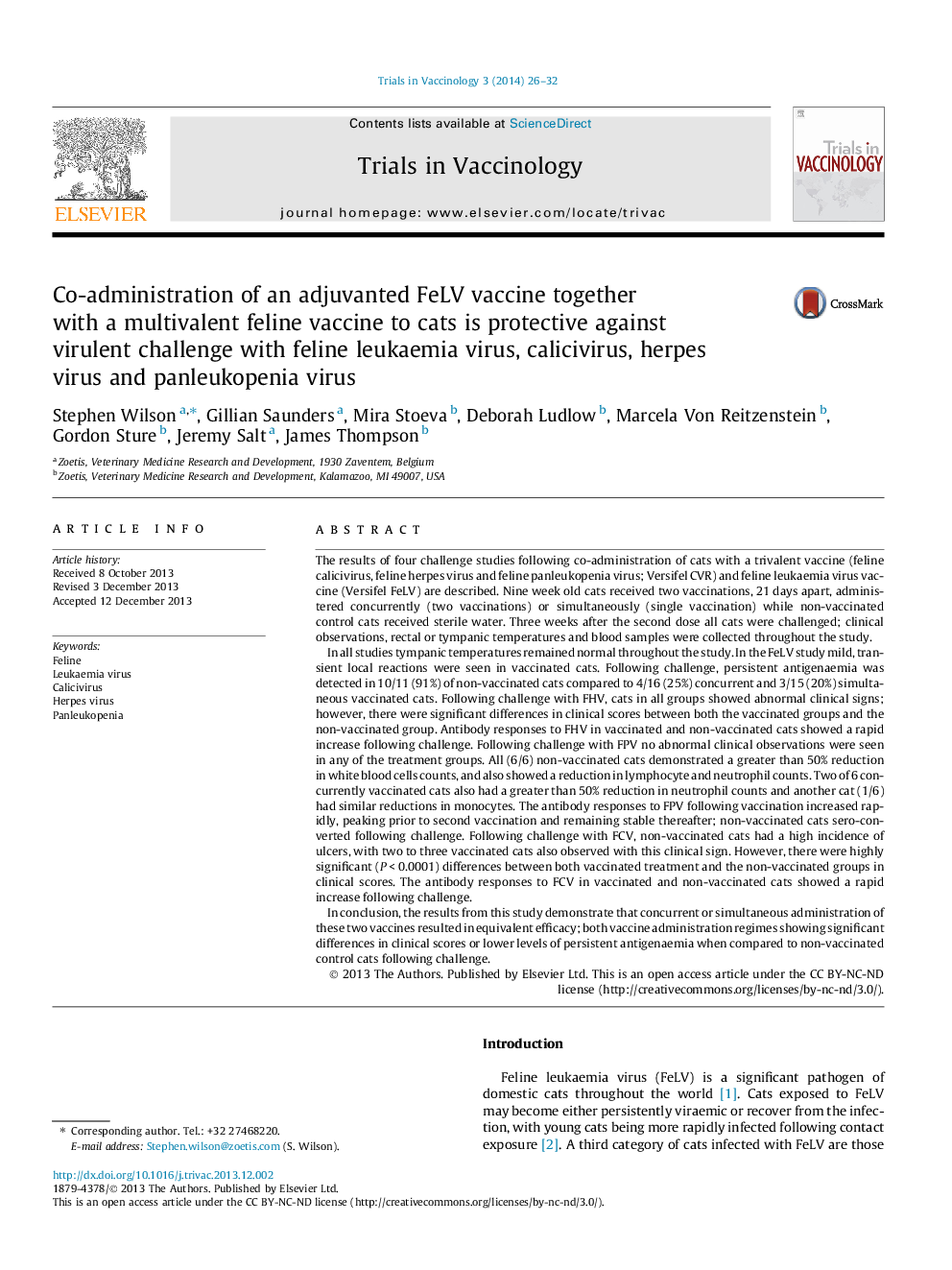| Article ID | Journal | Published Year | Pages | File Type |
|---|---|---|---|---|
| 2474402 | Trials in Vaccinology | 2014 | 7 Pages |
The results of four challenge studies following co-administration of cats with a trivalent vaccine (feline calicivirus, feline herpes virus and feline panleukopenia virus; Versifel CVR) and feline leukaemia virus vaccine (Versifel FeLV) are described. Nine week old cats received two vaccinations, 21 days apart, administered concurrently (two vaccinations) or simultaneously (single vaccination) while non-vaccinated control cats received sterile water. Three weeks after the second dose all cats were challenged; clinical observations, rectal or tympanic temperatures and blood samples were collected throughout the study.In all studies tympanic temperatures remained normal throughout the study. In the FeLV study mild, transient local reactions were seen in vaccinated cats. Following challenge, persistent antigenaemia was detected in 10/11 (91%) of non-vaccinated cats compared to 4/16 (25%) concurrent and 3/15 (20%) simultaneous vaccinated cats. Following challenge with FHV, cats in all groups showed abnormal clinical signs; however, there were significant differences in clinical scores between both the vaccinated groups and the non-vaccinated group. Antibody responses to FHV in vaccinated and non-vaccinated cats showed a rapid increase following challenge. Following challenge with FPV no abnormal clinical observations were seen in any of the treatment groups. All (6/6) non-vaccinated cats demonstrated a greater than 50% reduction in white blood cells counts, and also showed a reduction in lymphocyte and neutrophil counts. Two of 6 concurrently vaccinated cats also had a greater than 50% reduction in neutrophil counts and another cat (1/6) had similar reductions in monocytes. The antibody responses to FPV following vaccination increased rapidly, peaking prior to second vaccination and remaining stable thereafter; non-vaccinated cats sero-converted following challenge. Following challenge with FCV, non-vaccinated cats had a high incidence of ulcers, with two to three vaccinated cats also observed with this clinical sign. However, there were highly significant (P < 0.0001) differences between both vaccinated treatment and the non-vaccinated groups in clinical scores. The antibody responses to FCV in vaccinated and non-vaccinated cats showed a rapid increase following challenge.In conclusion, the results from this study demonstrate that concurrent or simultaneous administration of these two vaccines resulted in equivalent efficacy; both vaccine administration regimes showing significant differences in clinical scores or lower levels of persistent antigenaemia when compared to non-vaccinated control cats following challenge.
